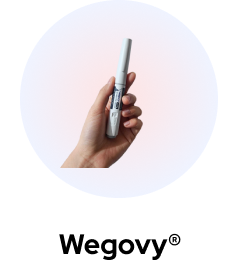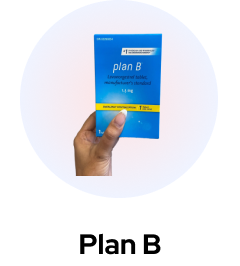Is Semaglutide Good for Weight Loss?
Also known by its brand name, Ozempic, semaglutide has been making waves in the world of type 2 diabetes and weight loss. Designed as a glucose regulator, it has emerged as a potential tool in the battle against obesity.
In this article we’re going to cover:
- What semaglutide is
- How effective it is for weight loss in those who aren’t diabetic
- The side effects of semaglutide for weight loss
- Who should use semaglutide for weight loss
- How to prepare yourself for semaglutide injections
- Frequently asked questions.
Let’s get started!
What Is Semaglutide?
Semaglutide is a prescription medication designed to help type 2 diabetics who are having issues controlling their blood sugar. It works as a glucagon-like-peptide-1 (GLP-1) receptor agonist, meaning it helps the body regulate blood sugar levels by stimulating insulin production.
Semaglutide is administered by injecting it subcutaneously from a pen, similar to an EpiPen
How Do Semaglutide Injections Work for Weight Loss?
Although semaglutide was initially developed for diabetics, one of its popular off-label benefits has been as a tool for weight management. It does this by slowing the passage of food through the digestive system, which suppresses appetite. Users, therefore, often end up in a caloric deficit.
GLP-1 receptor agonists can also directly work on the appetite regulation centers in the brain, leading to a reduction in hunger.
When used for weight management, semaglutide injections are most effective when combined with lifestyle changes. This may include a healthy diet, regular exercise, and therapy.
What Is Semaglutide Oral?
Semaglutide oral is exactly as the name suggests: it is a form of semaglutide that is administered as an oral pill.
While administering oral medication is often a very simple procedure, there are many guidelines to follow when taking semaglutide orally. While these will differ depending on your medical team and your specific needs, the standard instructions are as follows:
- Take with a sip of plain water — no more than 120 ml (4 oz). Do not take with any other beverage
- Swallow the tablet whole — do not crush or chew the tablet
- Wait at least 30 minutes after taking the tablet before you eat or drink anything other than plain water
- For best effect, aim to eat something 30–60 minutes after taking the tablet
- Take every dose the same way.
While your dosage depends on your conditions and how you respond to the medication, it is highly likely that you will need to take at least one tablet every day.
These instructions can be a lot to remember, additionally the oral form is absorbed differently in the body, which is why a lot of people tend to lean towards the semaglutide injection.
What Is Semaglutide Injection?
The semaglutide injection is a much more low maintenance way to administer the medication, and is often the method recommended by health professionals.
The injection is self administered once a week (though this may vary) and can be injected subcutaneously (ie, under the skin and into the fatty layer of tissue). Recommended injection sites include your stomach, upper arm, or thighs, and you should rotate the injection site each time.
You do not have to pay much attention to when you have your injection in relation to meals, and it can be done at any time of the day. The only things to consider with the semaglutide injection are where on the body you administer it and what day of the week you administer (try to keep it to the same day each week).
While those with a particular aversion to needles may prefer oral semaglutide, it is not difficult to see why the injection is a far more common choice. Both oral and injection requires patient compliance, as you’ll be responsible for administering your own dose.
Difference Between Semaglutide Oral vs. Injection
The main difference between the two methods of administering semaglutide is the way that the drug enters your body.
While there has been speculation that the semaglutide injection is more effective than oral semaglutide, studies have shown that, “Oral semaglutide was non-inferior to subcutaneous semaglutide,” meaning these two forms of semaglutide function more or less the same.
At the end of the day, it all comes down to preference.
If remembering to take your oral semaglutide daily doesn’t seem achievable, then the injection is the best pick for you. If you have a strong aversion to needles and would rather take the tablet, then the oral option may be better suited to you.
Types of Semaglutide Formulations
Injectable Formulation
The injectable formulation of semaglutide is a colourless solution that comes in pre-filled, single-patient-use pens.
The formula can vary, but according to Wegovy, this is the makeup of a subcutaneous injection in a pre-filled pen.
Single-use pre-filled pens deliver doses of:
- 0.25 mg per pen
- 0.5 mg per pen
- 1 mg per pen
- 1.7 mg per pen
- 2.4 mg per pen.
Multi-use pre-filled pens (FlexTouch) deliver doses of:
- 1 mg per pen
- 2 mg per pen
- 4 mg per pen
- 6.8 mg per pen
- 9.6 mg per pen.
The active ingredient in a standard Wegovy brand shot is, of course, semaglutide, while the inactive ingredients include:
- Disodium phosphate dihydrate, 1.42 mg
- Sodium chloride, 8.25 mg
- Water for injection.
Alongside these, hydrochloric acid or sodium hydroxide could potentially be added if required, in order to adjust pH.
Ozempic, on the other hand, comes in Ozempic Pens containing four doses (enough for a month). The dosage for Ozempic is:
- 0.25 mg
- 0.5 mg
- 1 mg
- 2 mg.
All doses of semaglutide are typically started at the lowest dose, then increased to the maintenance dose at four weeks, which is the dose you’ll remain on for the duration of your treatment. If this proves to be not enough, then you may be moved to a higher dose of the drug.
All injectable semaglutide requires careful dosage regulation with your medical team, and can lead to improved diabetic management. It can influence patient lifestyle and diet, too, especially if you’re taking it for weight management.
Oral Formulation
The oral formulation of semaglutide consists of three types of tables:
- 3 mg
- 7 mg
- 14 mg.
You’ll notice that these are much higher than the semaglutide injection, to account for the way it’s administered.
If you are prescribed semaglutide oral, it is likely that your medical team will recommend you to start on 3 mg once daily for 30 days, and then increase to 7 mg. The 14mg dose is typically reserved for those with issues that require additional glycemic lowering.
How much semaglutide you need to take will depend entirely on your unique needs, and should always be discussed thoroughly with your medical team.
In each tablet of the Rybelsus brand of semaglutide, there is of course the active ingredient of semaglutide itself, along with the inactive ingredients:
- Magnesium stearate
- Microcrystalline cellulose
- Povidone
- Salcaprozate sodium (SNAC).
If you have any intolerances to certain medications or ingredients, always inform your medical team.
Benefits of Semaglutide Formulations
Patients who have been prescribed semaglutide may be taking the medication for a variety of reasons. Let’s take a closer look at three of the main reasons.
Weight Loss
Semaglutide may assist with weight management due to the way that the medication mimics GLP-1 in order to suppress appetite. But how well does this really work?
According to a study conducted in 2022, 408 patients with a BMI or 27 or more were prescribed weekly semaglutide subcutaneous injections for a minimum of 3 months. During the trial, it was observed that by 3 months, the mean weight loss of the trial group was 6.7kg, and by 6 months, the mean weight loss was 12.3kg.
It’s clear in this study that semaglutide injections were able to successfully aid with weight management, though this study did not include other lifestyle intervention.
What about the oral form? According to the 2023 OASIS 1 trial, those who took 50 mg of oral semaglutide daily lost 17.4% of their body weight in 68 weeks.
Whether you are prescribed the injection or oral form of smegalutide, research suggests that significant weight loss is possible with the aid of this medication.
Of course, results will differ depending on your personal circumstance, health issues, additional diet and exercise considerations, and dosage.
Remember to always consult your medical team in order to remain safe and receive the best benefits.
Reduction in HbA1c Levels
HbA1c, also known as glycated haemoglobin, is created when the glucose in the body sticks to the red blood cells. This buildup results in too much sugar content in the blood, and is a serious concern for those with type 2 diabetes.
So, can semaglutide help with this issue?
A 2020 study suggests that administering just 0.5 to 1.0mg of semaglutide weekly can reduce HbA1c levels significantly.
This is great news for patients struggling with issues surrounding high HbA1c levels, particularly since this low level of semaglutide can be easily administered either through injection or via oral tablet and could replace insulin therapy in some cases.
Improved Glycemic Control
Another issue that patients with type 2 diabetes face is glycemic control. Luckily, it has been suggested that the use of semaglutide also may improve glycemic control.
In fact, in the same 2020 study, it was found that this aforementioned weekly intake of 0.5 to 1.0 mg of semaglutide resulted in significant improvement in glycemic control.
Clinical Trials and Results for Oral Semaglutide
Semaglutide has undergone various clinical trials, in several unique test conditions, with focus on different aspects of the medication.
In this section, we will go over three studies that have outlined the experience of patients who trialled semaglutide in a clinical setting, and take a look at the outcomes of these studies.
Japanese Patients Study Results
In a 2022 study, the efficacy and safety of oral semaglutide was tested in Japanese patients with type 2 diabetes. There was a belief that semaglutide shows different results in Japanese patient studies, however this study proved otherwise.
A total of 701 patients were included in this study, where each day they would take either an oral semaglutide tablet (3 mg, 7 mg, or 14 mg) or a placebo, spanning the course of 52 weeks, along with a 5 week follow up period.
The data collected showed a significant difference in HbA1c reduction and body weight changes in the subgroup that were administered the semaglutide as opposed to the placebo.
In the end, the study concluded that “oral semaglutide is effective across a range of baseline subgroups of Japanese patients with type-2 diabetes, with no unexpected safety findings.”
Weight Gain Study Results
A concern that some have raised regarding semaglutide is that coming off the medication might result in weight gain.
In a 2022 study, researchers aimed to analyze the changes in body weight in adults going through a semaglutide withdrawal. After monitoring 327 patients as they came off semaglutide, it was concluded that one year after ceasing to administer their typical weekly dose of 2.4 mg subcutaneous semaglutide, the patients regained 2/3 of the prior weight loss that they shed via semaglutide.
The purpose of this study was to confirm that obesity is in fact chronic, and ongoing treatment needs to be mainted in order to not regain weight that has been lost.
While these patients did regain two-thirds of their original weight after stopping semaglutide, they still came out of the experience weighing less than they did before starting semaglutide.
This means that while it is not impossible to gain weight during or after taking semaglutide, it is not overly common that you will end up weighing more than you did before starting the medication, though treatment presents long-term efficacy considerations.
Reduction in Body Weight and HbA1c Levels Study Results
A 2021 study analysed the effectiveness of oral semaglutide in relation to reduction in body weight and HbA1c levels.
A total of 2,836 patients received 14 mg of oral semaglutide in order to monitor how this impacted their body weight and HbA1c levels. The results indicated that “oral semaglutide was effective at lowering HbA1c and body weight, regardless of background medications.”
This evidence supports previous speculation and research done on the topic of the effectiveness of semaglutide on HbA1c levels and body weight.
Risks and Side Effects of Oral Semaglutide
The same as many other medications, semaglutide can initially have some significant side effects. While tolerability may vary, these side effects should not be taken lightly, and if you notice anything out of the ordinary while on this medication, contact your medical team immediately.
While more common side effects are not known to be particularly harsh, it is always a good idea to be vigilant and aware of issues that could potentially arise.
Gastrointestinal Side Effects
Semaglutide can cause gastrointestinal side effects, including:
- Nausea
- Vomiting
- Loss of appetite
- Constipation
- Diarrhea
- Abdominal pain.
Nausea is by far the most common of these symptoms, and will generally lessen in intensity the longer you stay on semaglutide. The other symptoms are known to come and go, though they are most common after the first few doses of semaglutide or when the dose is increased.
Other more severe side effects include:
- Hypoglycemia
- Risk of thyroid cancer
- Issues with gallbladder
- Pancreatitis
- Allergic reactions.
Monitor your health and symptoms, and if you experience any of the above more serious side effects and complications, contact your medical team immediately, or go directly to your local ER.
Why is Subcutaneous or Semaglutide Injection Preferred Over Oral?
It’s no secret that semaglutide is often preferred in injectable form. Oral semaglutide is often reserved exclusively for patients who:
- Have an aversion to of phobia of needles
- Cannot physically tolerate injections
- Are unable to self administer and have no carer to aid them.
Not only that, but with the semaglutide injection, you will only need to administer around 0.5 mg a week compared to the daily 3–14 mg of the oral form.
Patients typically report that they have a preference for the injection as it requires less frequent dosing and has more lenient rules and regulations surrounding how and when it is administered.
That being said, there is absolutely no shame in having an aversion to needles or being unable to administer an injection, and your medical team should be open and accommodating to your needs.
Your side effects may be more noticeable with the injection, though generally speaking neither form shows differing side effects.
Transitioning Between Injectable and Oral Semaglutide
Transitioning between injectable and oral semaglutide is a serious change that requires careful monitoring by your medical team. There are many things to consider when changing between the two ways of administering semaglutide, particularly the fact that you could be subject to dosage transitions.
It is possible to switch from injectable semaglutide to oral semaglutide, or vice versa, but not every patient will be able to tolerate potential formulation transitions, so it is a decision you will need to discuss with your medical team.
Going from 14 mg of oral semaglutide to its comparable dose of 0.5 mg weekly after switching to subcutaneous semaglutide is a big leap, and you will need to be monitored when doing so.
Key Takeaways
Both oral or injectable semaglutide can have a range of benefits when it comes to the treatment of type-2 diabetes and the management of body weight.
When it comes down to whether or not you should try semaglutide, or whether the oral or injectable form is right for you, the only people who can answer that question are you and your medical team.
If you are debating either starting semaglutide or switching to a different method of administering it, be sure to consult with your medical team.
FAQs
Can oral semaglutide replace insulin therapy?
While there are unique instances where oral semaglutide could replace insulin therapy, as of right now this medication is considered an add-on to work in tandem with other glucose-lowering drugs, such as insulin.
Semaglutide should not be taken as a substitute to insulin without extensive consultation with your medical team. It is also important to note that semaglutide is not approved for use with type-1 diabetes or diabetic ketoacidosis.
Are there any dietary restrictions when taking oral semaglutide?
While there are no rules for what you can and cannot eat while on semaglutide, taking semaglutide regularly might require dietary adjustments.
In order to combat gastrointestinal side effects, it is a good idea to avoid fatty foods and stay well hydrated. Steering clear of fast foods and foods that have a high sugar content will also help the efficacy of the drug, as well as prevent side effects such as nausea.
How is the efficacy of oral vs. injectable semaglutide compared in long-tem use?
Studies have shown that oral semaglutide and injectable semaglutide have no significant difference in efficacy once they are in your body. The main aspect to consider when it comes to oral vs. injectable semaglutide is the means of administering it.
Finding the method that is most comfortable for you is the most important thing to consider and you should be sure to discuss this with your medical team.













 (US)
(US)